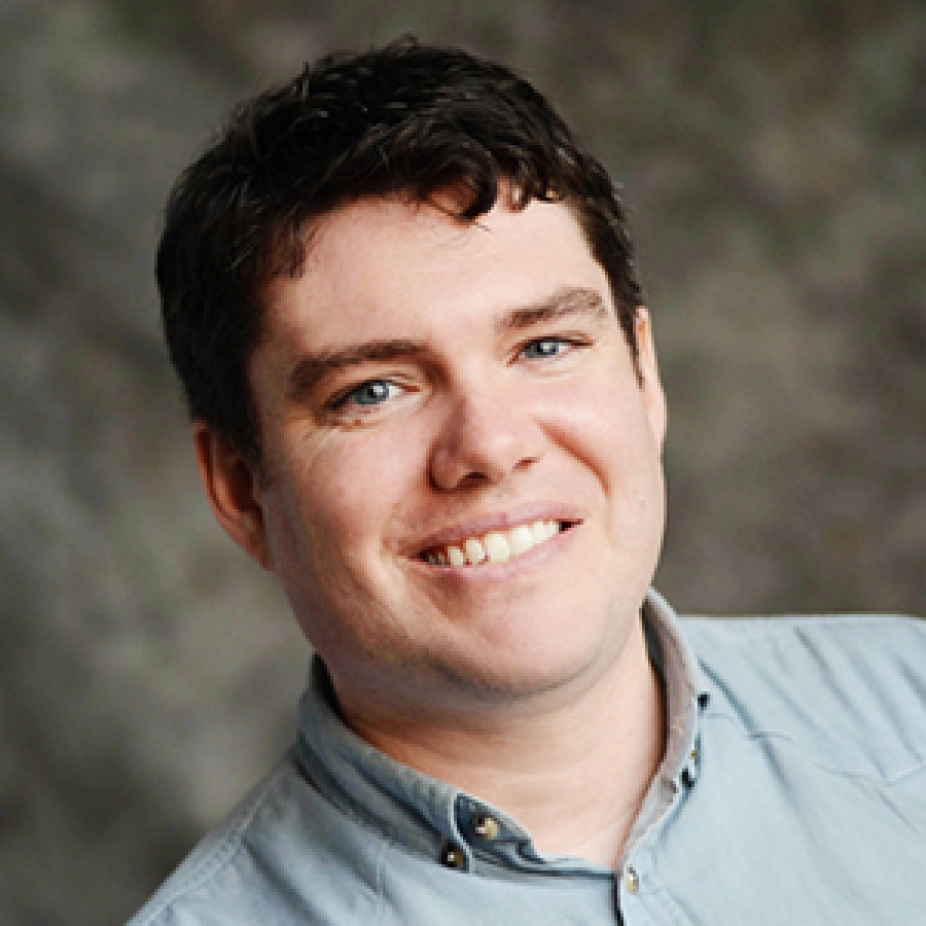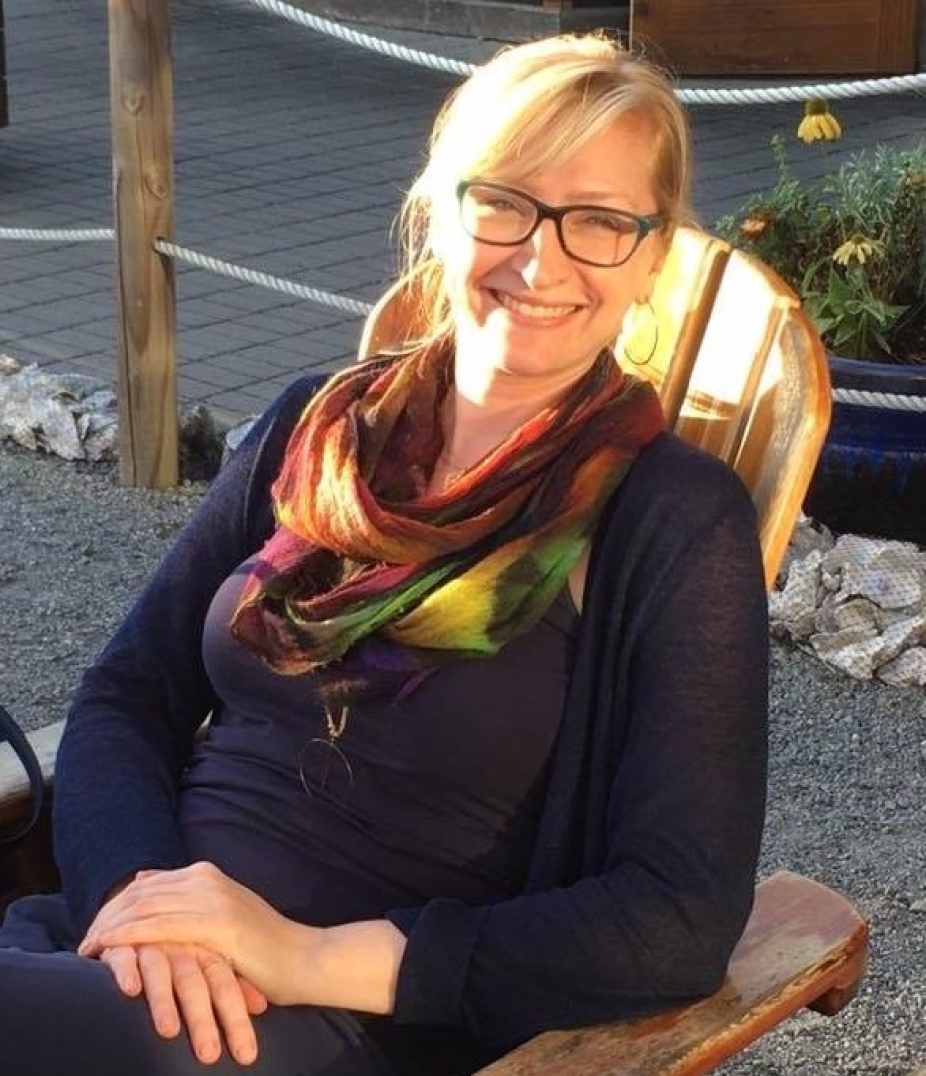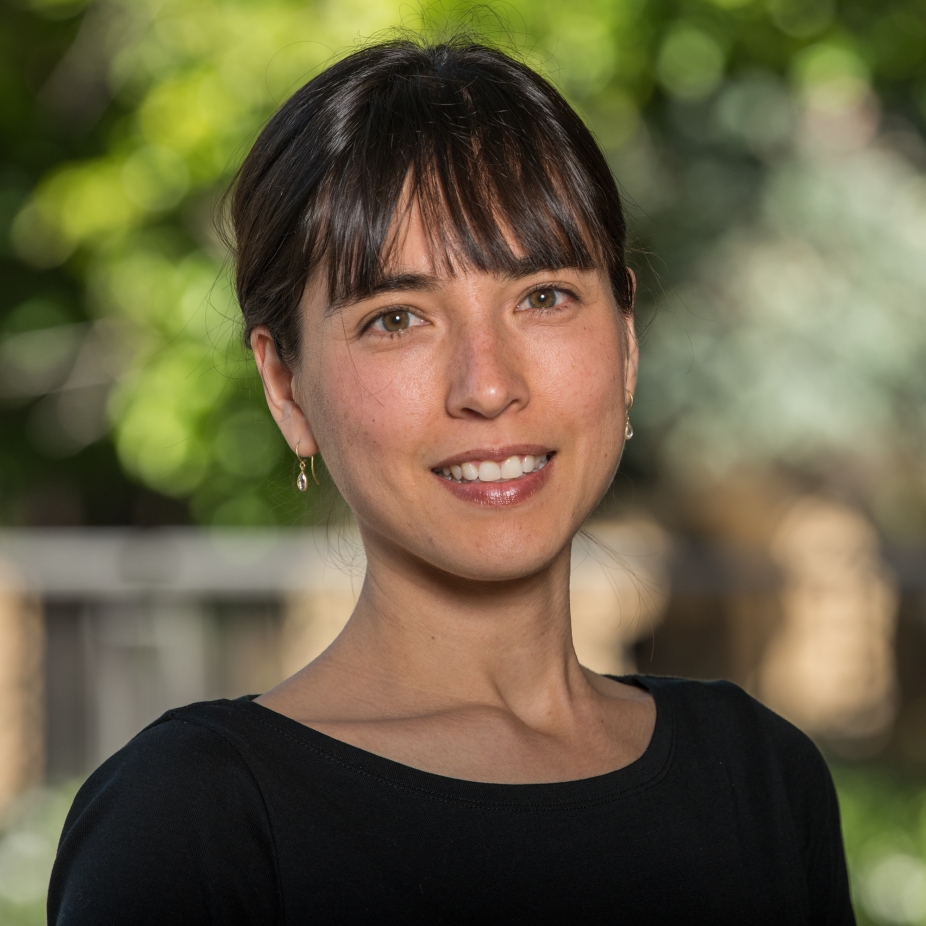2019-2021 Research Theme and Awardees
COASTAL REGIONS AND HUMAN SETTLEMENTS
Coastal zones in the US and around the globe already show the impacts of environmental variability and climate change as well as natural hazards on human settlements. In general, coastal population growth and urbanization rates are higher in coastal regions than in inland communities (Neumann, 2015). In the US, more than 50% of the population lives in a coastal watershed county, and population density in coastal counties is five times greater than population density in inland counties (NOAA, 2013). Population growth and development are important drivers of change in coastal communities, and exert pressure on coastal ecosystems through increased utilization and pollution (Neumann, 2015). Understanding human and environmental impacts along our coastline is critical for securing economic prosperity, environmental sustainability, and national security.

2019-2021 Awarded Proposals
In 2019, the Innovator Program invited interdisciplinary research proposals on coastal processes, the built environment, and the people that inhabit coastal regions. Funded projects in the 2019-2021 cohort addressed such issues as the potential impacts of changing coastlines on minority populations and the elderly, improving forecasts of coastal flooding, better management of marine resources, and more effective communication of hurricane forecasts. They will build on the social science and interdisciplinary research currently taking place across much of NCAR.
MONICA BARRA |
UNIVERSITY OF SOUTH CAROLINA Understanding the physical and cultural impacts of climate change and adaptation science and policy on non-traditional forms of housing and land tenure among African American coastal communities in the U.S South Coastal South Carolina and Louisiana are regions scientists predict will weather some of the highest instances of sea level rise in the country, home to numerous African American communities. This proposal aims to ethnographically explore the multiple dimensions of vulnerability and resilience that accompany living on “at risk” property, including: the everyday legal challenges of heir’s property, its cultural and historic meaning as resistance to contemporary and past forms of racism, and how the land’s occupants and caretakers continue to cultivate relationships to family land in the face of our unfolding climate crisis. Through this proposal we will 1) Conduct comparative ethnographic fieldwork among African American communities in coastal South Carolina/Georgia and Louisiana, with a focus on identifying the extent of non-traditional housing and land tenure patterns and its impacts on residents; 2) Determine the physical hazards faced by these groups and develop culturally appropriate adaptation practices. The broader goal of this research is to identify and reduce the specific physical and social vulnerabilities faced by these groups and construct a framework for cross-disciplinary collaboration on climate and adaptation science that integrates local environmental knowledge and scientific expertise. Analysis will focus on reconstructing historic property relations, tracing their relationships to local and regional race relations, and mapping this on to the physical transformations of the coastal landscape. Historical background will also be used to develop further ethnographic research. Our team will produce an academic article summarizing the relationships between housing and land justice for coastal communities of color with an eye towards articulating actionable best practices for research and application of climate change and adaptation policies. Additionally, we will develop and run an environmental competency working group focused on housing and land justice as it pertains to climate change and adaptation. NCAR expertise on science communication and integration of culturally diverse climate and adaptation science - exemplified by the work of Dr. Lazarus and the Rising Voices Program as well as Olga Wilhelmi who works on issues of environmental and social justice and climate change coping and adaptation - will provide vital guidance on the creation and facilitation of this working group and its outcomes. Student Researcher: Teresa Norman |
ANAMARIA BUKVIC
|
VIRGINIA TECH Changing coastlines, changing mobility: when staying in place is no longer an option Risk information suggests that almost all human settlements in coastal regions will be affected to some extent by a more frequent and intense coastal flooding. What is not well understood is whether coastal residents will be able to cope with these impacts or will have to consider relocation. The science about rapid onset of coastal hazards and their impacts on coastal populations is already well-defined, but the forward-looking anticipatory planning for slow onset climatic risks over the long-time horizons is still limited. Moreover, it does not address the potential cascading events or thresholds beyond which the community may have a limited number of meaningful options to respond to accelerated coastal flooding. Further, little is known about the role of place attachment in relocation decision-making especially in different coastal settings with diverse individual or collective community values, culture, and historic character. This research project has two main objectives. First objective is to understand how place attachment affects people’s decision to relocate in response to coastal flooding in contextually different rural and urban coastal locations. In this analysis we used mixed-methods approach, namely a systematic literature review and geospatial analysis to develop and apply the coastal relocation place attachment index and a household survey to validate this new measure in different in rural and urban coastal “places” with differing socioeconomic vulnerability, cultural identity, and historic context. Second objective is to identify the flood-induced cascading events and tipping points in coastal jurisdictions that could lead to displacement and relocation via interviews with relevant stakeholders. Thirty interviews were conducted with rural and urban decision-makers in Maryland, Virginia, and North Carolina remotely via Zoom during summer 2020 to accommodate for COVID-19 travel restrictions. Interviews were recorded, transcribed, and analyzed using Nvivo qualitative data analysis software. Our results show that tipping points and cascading events differ between rural and urban communities in part due to their qualitative determinants such as place attachment, connection to the land, land-water-based livelihoods, and cultural values. Unique characteristics of rural and urban populations mostly define where their tipping points are and which cascading events may be the primary drivers of their decision to move, but are consistently the same when it comes to driving stressors of relocation. Student Researchers: Jack Gonzales and Aaron Whittenmore |
DONOVAN FINNdonovan.finn@stonybrook.edu |
STONY BROOK UNIVERSITY A user-driven framework for harnessing atmospheric research to inform planning and policy for coastal resilience One of our most pressing societal questions is how to manage coastal human settlements as sea levels rise, coasts erode and extreme weather events become more common. These risks and their impacts on communities will force planners, engineers, politicians, business owners and residents – in short,everyone – to make increasingly difficult decisions about how to adapt to likely changes in the natural environment and mitigate harmful effects using strategies ranging from coastal retreat to more rigorous building codes to massive infrastructure projects. Making these kinds of critically important decisions will be more effective if they can be informed by actionable climate science and mechanisms for effective communication of regional climate information and its associated uncertainties to decision-makers. But to be of value beyond academia, climate data needs to be sufficiently understandable (i.e. communicated in the vocabulary of the decision-makers), and useful for the particular decisions that are being made. Recent interactions with local planners in the coastal northeastern US today suggest that, despite a growing understanding of climate related risk and significant advances in technology, US planners still face obstacles to using available online resilience planning tools or published scientific data for making planning and policy decisions. The reasons vary, but they can be summarized as (1) uncertainty among end users regarding the most useful, recent or applicable data given the array of options (2) a mismatch between the available quantitative/qualitative outputs and those needed by the end user to make decisions (3) lack of capacity (e.g. staff with necessary scientific backgrounds) to consistently and accurately employ available tools. Moreover, while larger high-capacity cities have some ability to integrate sophisticated science into decision-making, these are exceptions, and many coastal communities are relatively small and under-resourced; it is critically important to develop planning tools and processes useful in these places in particular. This project will 1) assess the strengths and weaknesses of available climate-related data sources and decision-making tools used by, and not used by, local coastal stakeholders, 2) develop a better understanding of the barriers to utilizing cutting-edge climate science in local decision-making, and 3) create a framework for more useful and timely knowledge transfer between climate scientists and local planners, regulators and policy-makers by providing access to cutting-edge atmospheric and climate science in user-friendly and actionable formats to assist in critical resilience planning and decision-making. Student Researcher: Naomi Miller |
CAROLYN FISHcfish11@uoregon.edu |
UNIVERSITY OF OREGON Map storytelling to build empathy for coastal Alaskan indigenous communities Maps are vital in communicating climate change research to the public because they are a clear and efficient way to display the spatial aspects of climate change information. However, scientific and seemingly objective maps constructed by researchers often present climate change as abstract and thus have the potential to fail to engage and persuade readers. In addition, these maps are typically created for academic researchers as opposed to the public at-large. There have been recent calls within the fields of cartography and geovisualization to incorporate storytelling into map design. This call has two arguments: 1) maps can tell stories and in doing so can incorporate emotion into the design, and 2) telling stories of indigenous cultures even with modern technology can be done with mutual respect and can help build empathy and understanding for cultures we may not understand. This research will advance understanding within geography and geovisualization by improving our understanding of the importance of storytelling as a means for communicating critical social and environmental topics such as climate change to the public. Storytelling has been theorized to be vital to mapped communication. This research empirically tests storytelling maps to evaluate emotional responses, empathy, and the ability of the maps to bring readers closer to a place they have never visited. In addition, this research answers calls to bring indigenous community ideas to mapping as a way to diversify map designs and connect with readers in ways not thought of by Western cartographers. By combining stories collected through interviews with Oregon coast fishers about the impacts of ocean acidification and hypoxia (OAH) on livelihoods with quantitative spatial OAH data, we seek to investigate how storytelling maps, the combination of narratives and place, are experienced by readers, and what impacts the maps have on readers’ pre-existing attitudes on climate change through an online survey. To analyze this data, we will use regression analysis to understand which types of maps and designs predict: connection to place, empathy for indigenous groups, and certain emotional responses. This research is a collaborative effort between cartographers and biogeochemists to investigate how map design can improve climate change communication. The results of this research will be shared not only with other scientific researchers but also with the public. Student Researcher: Michala Garrison and Stuart Steidle-Nix |
KYLE MANDLIktm2132@columbia.edu |
COLUMBIA UNIVERSITY Creating better forecasting and predictive capabilities for coastal flooding due to storms Coastal areas throughout the world have long faced the risk of coastal flooding. Flooding due to storms is one of the most ubiquitous of these threats as demonstrated by the prolific 2017 hurricane season in the Atlantic, which included Hurricanes Harvey, Irma and Maria, causing an estimated $268 billion in damages, and typhoon Haiyan (2013), which claimed over 6,000 lives in the Philippines. Today and in the future these disastrous events will become more common due to the impacts of climate change. Sea-level rise, predicted to rise at least 1 meter in the world-wide mean by the end of the century, is expected to cause coastal storm flooding associated with previously moderate coastal storms to become disasters. Given these issues the computational prediction of coastal storm flooding is becoming a critical tool to addressing the threats posed from tropical and extra-tropical cyclones throughout the world. Coastal storm flooding can generally be broken down into three components. Storm surge, usually the largest contributor to flooding, is caused primarily by the wind field pushing water up against the coastline with a smaller contribution from the pressure gradient of the storm. Wind and the waves generated by said wind, can also contribute anywhere from 15-35% to overall surge height. The third component is flooding due to precipitation. All three of these components interact in other complex, multi-scale ways making it crucial to be able to numerically model each of them and their interactions. The overall goal this proposal is to develop methods and collaborations aimed at enabling the development of state-of-the-art, multi-scale and multi-physics computational approaches that are capable of addressing the challenges faced by coastal communities due to flooding. This proposal aims to provide a sensitivity analysis of what impact input from a number parameterized tropical cyclone models have on a storm surge model, namely GeoClaw, if not others. The strategy for accomplishing this will utilize adaptivity in computational resolution and leverage work on novel models for increasing the ability to accurately represent the ocean under the influence of a severe storm while maintaining computational tractability. This includes coupling to overland flooding models and studying how to best communicate the resulting risks. This project will involve NCAR scientists using the WRF-hydro model. Additional collaboration will center on incorporating wind-waves and computing uncertainty due to storm forcing that will also be explored in collaboration with Cindy Bruyere and James Done. The interaction of these disparate components, overland flooding, surge and wind-waves, will also be of interest for study within RAL and MMM. There are other opportunities for connections with MMM regarding surge predictability and ensemble prediction at several day time-scales. Student Researcher: Chanyang (Judah) Ryoo and Huda Qureshi |
TALEA MAYOtalea.mayo@emory.edu |
EMORY UNIVERSITY Do you see what I see: Improving the communication of hurricane storm surge risk with GIS mapping Despite advances in scientific and engineering approaches for storm surge hazard assessment, many coastal communities remain at risk for devastating storm surges. This has recently been illustrated by the destructive land-falling hurricanes Harvey, Irma, and Maria in 2017, and Florence and Michael in 2018. Risk is the product of hazard, exposure, and vulnerability. For storm surge risk assessment to make the largest impacts, hazard assessment alone is insufficient. We use high fidelity numerical simulation to compare the storm surges of historical storms to those produced under end of century climate scenarios and assess the impact of climate change on storm surge inundation. We simulate historical storms that impacted the Gulf of Mexico and Atlantic Coasts of the continental US. We find that the volume of inundation increases for most storms and the average change for all simulated storms is +36%. The extent of inundation also increases for most storms, and the average change for all simulated storms is +25%. Notable increases in inundation occur near Texas, Louisiana, Mississippi, the west coast of Florida, the Carolinas, and New Jersey. Our calculations of inundation volume and extent suggest that at the end of the century, we can expect hurricanes to produce larger storm surge magnitudes in concentrated areas, as opposed to surges with lower magnitudes that are widespread. We use these model simulations to map and understand impacts to socially vulnerable populations over the coming decades. These results will help to improve community resilience to hurricane storm surges by developing a fundamental understanding of the ways flood risk can better be communicated to vulnerable groups. Specifically, we will provide a methodology for visualizing ADCIRC storm surge model output in a way that can be readily integrated with GIS data. We will also gain a qualitative and quantitative understanding of the impact of social data on the risk perception of vulnerable groups, and what types of data, specifically, have the greatest impact. We will better understand the role of prior hurricane experience in the risk perception of vulnerable groups, and how socially relevant data can be used to overcome this in instances where it is problematic. Student Researchers: Danielle Sharpe and Jeane Camelo |
ALEXIS MERDJANOFF |
NEW YORK UNIVERSITY Aging in high-risk coastal regions: Examining the social and physical infrastructure needs of older adults in the Gulf Coast Rising seas, sinking land, and strengthening hurricanes have all contributed to coastal loss, which is happening along the Louisiana coastline at a faster rate than anywhere else in the US. Public health research documents that these coastal environmental threats disproportionally affect older adults. Given this perfect storm of shrinking coastlines and an aging U.S. population, there is an urgent need to understand how older adults can successfully age in place, including the social, economic, and health resources needed to maintain coastal communities, as well as possible mitigation and adaptation strategies. Using in-depth interview data collected from older adults living in coastal Louisiana parishes, the goals of this research are: 1) to gain a deeper understanding of how coastal erosion and frequent flooding influence the decision to age in place; 2) to compile evidence as to how coastal communities can promote resilience; and 3) to use this evidence to increase awareness and enhance policy discussions on coastal adaptation. This proposal leverages an existing natural experiment in mitigation and adaptation in the Gulf Coast, the Gulf Coast Child and Family (G-CAFH) study, which is one of the longest-running disaster recovery studies in the US. The Louisiana Office of Community Development began working with coastal communities as part of an initiative called Louisiana’s Strategic Adaptations for Future Environments (LA SAFE). Gabriella Meltzer and I will collect comparative in-depth interview data from older adults (55+) living in LA SAFE parishes, and from those living in non-LA SAFE parishes. Additionally, we will conduct interviews with stakeholders from five parishes (Jefferson, Plaquemines, St. Tammany; Orleans, St. Bernard), including health and social service providers, religious leaders, and community organizers. The complexity of this problem requires an interdisciplinary approach that integrates expertise from social science, gerontology, and public health as well as from NCAR scientists and engineers from the Mesoscale & Microscale Meteorology Laboratory (MMM) and Research Applications Laboratory (RAL). First, partnering with the Weather Risks and Decisions in Society (WRaDS) within the Prediction, Assimilation and Risk Communication section offers a collaborative opportunity to explore how prior disaster exposure shapes perceived climate risk among older adults and influences their decisions to age in place. Working with researchers from WRaDS, specifically Drs. Julie Demuth and Heather Lazrus, will provide a perspective needed to understand the perceptions and responses to climate-related information among vulnerable groups. Dissemination will include peer-reviewed articles and conference presentations. Student Researcher: Gabriella Meltzer (gm3085@cumc.columbia.edu) |
SAMANTHA SIEDLECKI |
UNIVERSITY OF CONNECTICUT Predictive frameworks to understand processes driving change in the coastal ocean: coastal biogeochemistry and ocean health metrics relevant to marine resource management on the Northeast shelf Over recent decades, the combination of fossil fuel emissions, deforestation, and cement production have caused large physical and biogeochemical modifications to the world’s oceans. Biogeochemical alterations are co-occurring, including oxygen declines, changes in productivity, and increased dissolved inorganic carbon content due to uptake of anthropogenic carbon dioxide – which alters the pH and mineral saturation state through a process called ocean acidification. Individually and together these changes pose threats to marine organisms. Big ocean changes are happening, but global trends may not accurately represent what happens in coastal regions. Development of predictive capacity in coastal regions is critical to help coastal communities plan for their vital marine resources over the coming decades, and some regions like the west coast of the US are more advanced in the development of this capacity than others. An important step in that development involves identification of mechanisms responsible for communicating the large scale signals of global change to coastal regions. Identification of these mechanisms will depend on a modeling framework and the coupling technologies -how global models are coupled to regionally-refined systems capable of resolving local biogeochemical dynamics. The worked proposed here will identify mechanisms by which climate-driven variations in physical and biogeochemical dynamics propagate to relevant spatial scales in a downscaled simulation framework of the Northwest Atlantic continental shelf - a region that houses a vital and vulnerable fishery, and where this capability does not yet exist. The goal is to empower coastal communities in the Northeast US with information to plan for changes to their marine resources. The proposed project would identify mechanisms by which climate-driven variations in physical and biogeochemical dynamics propagate to relevant spatial scales for the scallop fishery on the Northwest Atlantic continental shelf, and assess the predictability of those mechanisms on decadal timescales. Specifically, what processes govern regional rates of acidification and deoxygenation? How have those processes changed over the last few decades? How will they change in the projected future? Student Researcher: Kelly McGarry |
GABRIELLE WONG-PARODI |
STANFORD UNIVERSITY A prospective longitudinal study of environmental coastal threats on health and resilience, Gulf of Mexico Gradual (e.g., sea-level rise) and episodic (e.g., hurricanes) environmental changes are increasing along the U.S. Gulf of Mexico and Southeastern Atlantic coasts; associated flooding, mold, air pollution, and chemical contamination will likely have profound effects on public health. These events, combined with stressors that occur at the individual (e.g., divorce, abuse) and community (e.g., socioeconomic) levels, may severely limit coastal residents’ capacity to thrive and adapt to expected future environmental change. Understanding the physical and mental health consequences of this confluence of exposures is critical to developing targeted interventions that increase individual and community resilience. This conceptualization acknowledges the essential role health plays in increasing human capital among coastal residents who must adapt to a changing physical environment. Hence, the aim of this study is 1) To determine the multi-level effects of gradual and episodic environmental change, community, and individual factors on trajectories of resilience – mental and physical health, protective behaviors – among 4,000 U.S. Gulf of Mexico and Southeastern Atlantic coastal residents; and 2) To develop new types of cross-disciplinary environmental threats assessments with research groups such as Mesoscale & Microscale Meteorology (MMM) and the Research Applications Laboratory (RAL) at NCAR through the combination of environmental data (e.g., observations, predictions, geophysical risk assessments) with community-level factors (e.g., vulnerability) and measured individual-level factors. This two-year prospective longitudinal study of 4,000 U.S. Gulf of Mexico (Texas, Louisiana, Mississippi, Florida Gulf) and Southeast Atlantic (Florida Atlantic, Georgia, South Carolina, North Carolina) coastal residents, will investigate the impact of ongoing gradual and episodic environmental change on trajectories of individual resilience (physical and mental health, protective behaviors). Outcomes include a custom, representative panel – the Community Health, Environmental Exposure, and Resilience Study (CHEERS) panel – who live in coastline counties. This allows for the study of longer term (>2 years) human responses such as adaptation, migration, and health ailments to inform environmental risk assessments, risk communications, disaster preparedness, and coastal planning. Student Researcher: Nina Berlin Rubin |







